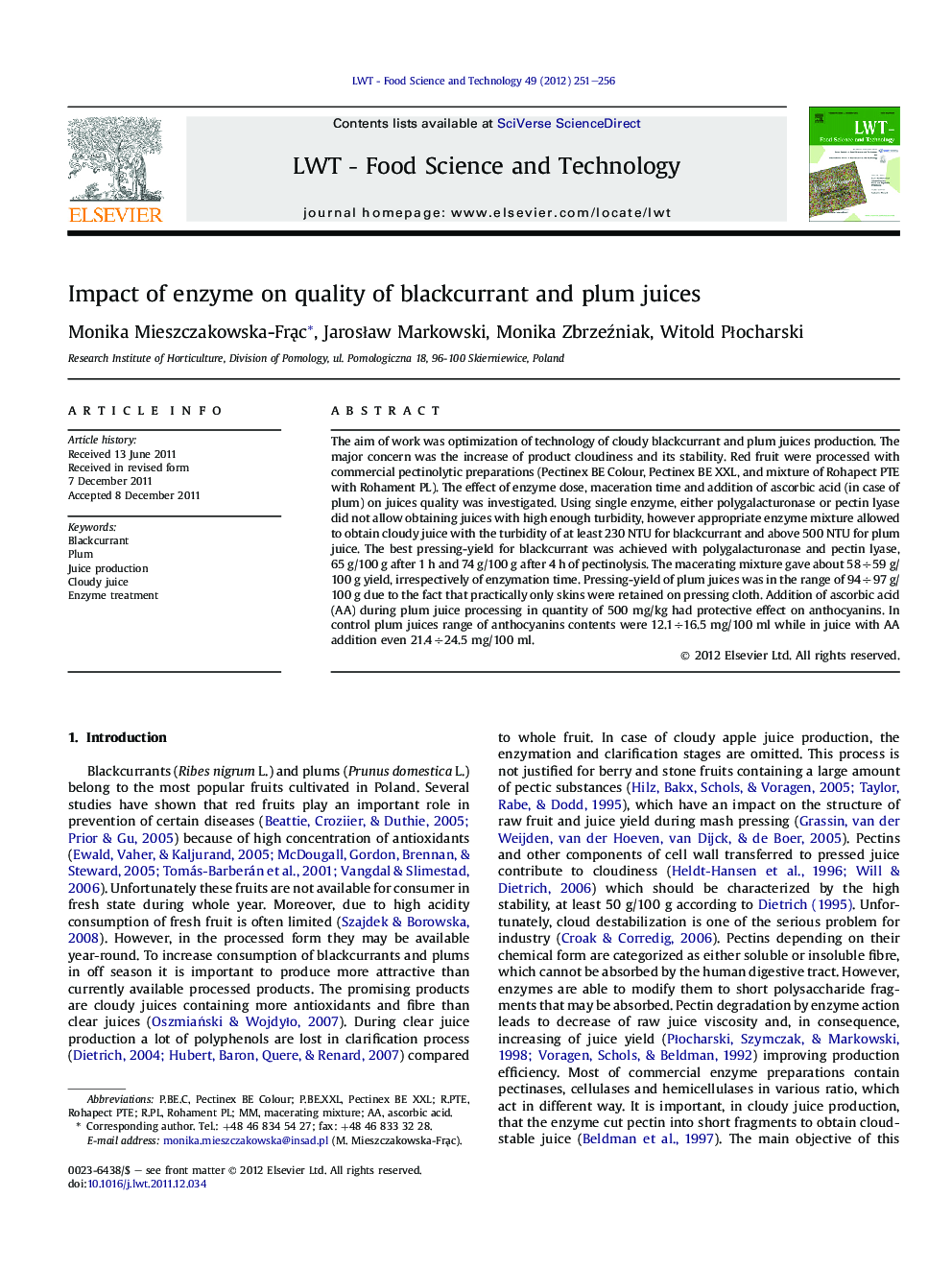| کد مقاله | کد نشریه | سال انتشار | مقاله انگلیسی | نسخه تمام متن |
|---|---|---|---|---|
| 4563976 | 1330910 | 2012 | 6 صفحه PDF | دانلود رایگان |

The aim of work was optimization of technology of cloudy blackcurrant and plum juices production. The major concern was the increase of product cloudiness and its stability. Red fruit were processed with commercial pectinolytic preparations (Pectinex BE Colour, Pectinex BE XXL, and mixture of Rohapect PTE with Rohament PL). The effect of enzyme dose, maceration time and addition of ascorbic acid (in case of plum) on juices quality was investigated. Using single enzyme, either polygalacturonase or pectin lyase did not allow obtaining juices with high enough turbidity, however appropriate enzyme mixture allowed to obtain cloudy juice with the turbidity of at least 230 NTU for blackcurrant and above 500 NTU for plum juice. The best pressing-yield for blackcurrant was achieved with polygalacturonase and pectin lyase, 65 g/100 g after 1 h and 74 g/100 g after 4 h of pectinolysis. The macerating mixture gave about 58÷59 g/100 g yield, irrespectively of enzymation time. Pressing-yield of plum juices was in the range of 94÷97 g/100 g due to the fact that practically only skins were retained on pressing cloth. Addition of ascorbic acid (AA) during plum juice processing in quantity of 500 mg/kg had protective effect on anthocyanins. In control plum juices range of anthocyanins contents were 12.1÷16.5 mg/100 ml while in juice with AA addition even 21.4÷24.5 mg/100 ml.
► In this study examined possibility of cloudy juice production from blackcurrant and plum.
► The juice yield and turbidity were ones of the main characteristics estimated effectiveness of technology.
► To obtain cloudy juice from difficult to press fruit is essential to use enzymes.
► Ascorbic acid addition had protective effect on anthocyanins content during juice production.
Journal: LWT - Food Science and Technology - Volume 49, Issue 2, December 2012, Pages 251–256